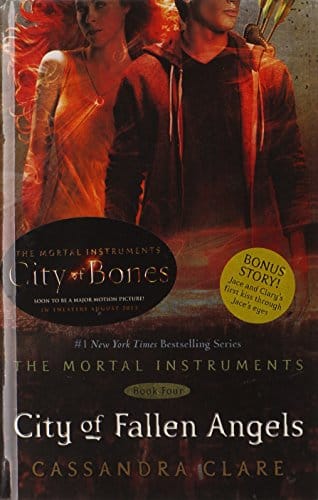City of Fallen Angels: Exploring Cassandra Clare’s Urban Fantasy Masterpiece
Discover the plot, characters, themes, and urban fantasy appeal of Cassandra Clare’s City of Fallen Angels in this comprehensive, spoiler-free guide.

Introduction
“City of Fallen Angels,” the fourth novel in Cassandra Clare’s wildly popular The Mortal Instruments series, catapults readers back into the shadowy streets of New York City where angels, demons, and secretive Nephilim wage an endless war. Published in 2011, this installment raises the stakes after the apocalyptic events of City of Glass, focusing on the emotional aftermath for Clary, Jace, Simon, and the rest of the Shadowhunter world. In this article, we dive deep into the book’s plot, characters, themes, and its place within modern urban fantasy, giving fans and first-time readers alike a clear sense of why “City of Fallen Angels” remains a must-read.
Plot Overview Without Spoilers
The story opens several weeks after the demons’ defeat in Idris. Peace feels almost attainable, yet the fragile calm begins to fracture when Shadowhunter patrols discover murdered Downworlders posed in ritualistic fashion. Simon Lewis, now a Daylighter vampire branded with the Mark of Cain, finds himself stalked by ancient forces interested in his unique abilities. Meanwhile, Clary Fray trains intensively to embrace her heavenly heritage while struggling to understand Jace’s sudden emotional distance. As the group unravels the new mystery, they uncover a sinister plot that could upend the truce between Shadowhunters and Downworlders and resurrect an evil thought long vanquished.
Main Characters and Their Arcs
Clary Fray
Clary’s journey in “City of Fallen Angels” centers on empowerment. No longer the untrained artist stumbling into a secret world, she hones her rune-drawing talent to protect those she loves. Readers witness her transformation from reactive heroine to proactive warrior, cementing her role as a leading Shadowhunter.
Jace Herondale
Haunted by lingering trauma, Jace’s once-steady confidence gives way to insecurity and disturbing dreams. His internal conflict supplies the novel with emotional tension, and his romance with Clary becomes a poignant exploration of vulnerability.
Simon Lewis
Simon steps into the spotlight as he navigates life as a vampire who walks in daylight. Balancing his mundane friendships, two complicated romances, and newfound supernatural fame, Simon embodies the struggle to belong to multiple worlds without losing oneself.
Isabelle Lightwood & Alec Lightwood
Isabelle’s fierce loyalty and Alec’s evolving partnership with the High Warlock Magnus Bane add depth, humor, and representation. Their subplots reveal how relationships must adapt when the external world refuses to settle down.
Themes and Symbolism
Identity and Transformation: Vampirism, rune magic, and angelic blood function as metaphors for the changes teens face as they transition into adulthood. Each character’s supernatural condition magnifies real-world questions of self-acceptance.
Love Versus Duty: Romantic bonds frequently clash with cultural expectations. Shadowhunter law forbids many of the relationships at the novel’s heart, offering commentary on prejudice and personal freedom.
Resurrection and Consequence: The book’s title hints at fallen angels and resurrected evils. Clare uses the threat of returning darkness to examine how past actions reverberate through future generations.
Connection to the Mortal Instruments Universe
While “City of Fallen Angels” can technically be read as a standalone adventure, longtime fans will appreciate the callbacks to earlier battles, family secrets, and prophecies. Clare seamlessly introduces new villains, like the mysterious Camille Belcourt, without alienating newcomers. For dedicated readers, hidden Easter eggs foreshadow events in later novels (City of Lost Souls and City of Heavenly Fire), enriching the saga’s overarching mythology.
Urban Fantasy at Its Finest
Cassandra Clare’s depiction of New York City blends the familiar and the fantastical. Subway tunnels double as demon portals, and historic brownstones mask seraph-blade arsenals. The result is an immersive setting where magic lurks beneath every streetlamp. This technique epitomizes urban fantasy, rooting supernatural drama within a recognizable metropolis so readers can imagine what lurks behind their own city’s facades.
Why You Should Read “City of Fallen Angels” Today
1. Character-Driven Suspense: Clare’s intricate character work makes each plot twist resonate on a personal level.
2. Diverse Representation: LGBTQ+ relationships, different faith backgrounds, and fluid identities offer inclusivity without tokenism.
3. Fast-Paced Action: Sword fights, rooftop chases, and gothic necromancy keep pages turning at lightning speed.
4. Rich Lore: Angelic hieroglyphs, Biblical allusions, and modern pop-culture references combine into a lore stew fans love to dissect.
Tips for First-Time Readers
• Start with Book One: If possible, begin with City of Bones. The emotional payoffs in book four land harder when you understand each character’s full history.
• Keep a Rune Glossary: Newcomers might find the array of magical symbols overwhelming. A quick reference sheet can enhance immersion.
• Embrace the Audiobook: Narrators bring sarcastic banter and emotional monologues to life, ideal for commutes.
Final Thoughts
“City of Fallen Angels” stands as a pivotal juncture in The Mortal Instruments series, evolving beloved characters while widening the scope of the Shadowhunter universe. Its deft mix of supernatural thrills, emotional stakes, and real-world parallels secures its place in contemporary YA fantasy classics. Whether you are a returning fan eager to revisit New York’s demon-haunted alleys or a curious reader hunting for your next binge-worthy saga, this novel delivers an unforgettable ride through light and darkness alike.



